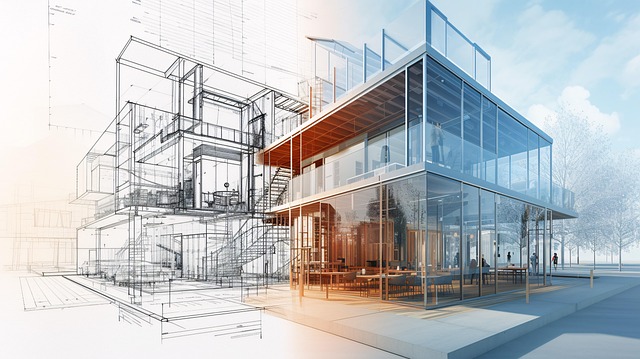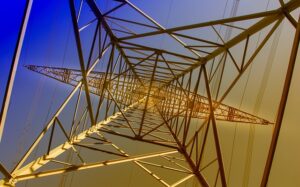Optimizing 50 kW Combi Boiler Performance with Entity Embedding Alignment
The 50 kW combi boiler is a high-output heating system for large properties, offering efficient heat…….

The 50 kW combi boiler is a high-output heating system for large properties, offering efficient heating and hot water with condensing technology, natural gas/LPG compatibility, and ErP A ratings. Modern embedding techniques using AI enhance performance control, allowing precise tailoring to specific needs like hot water flow rate and central heating capacity. Similarity measures are vital for selecting the right 50 kW combi boiler, ensuring optimal, sustainable performance aligned with environmental goals for large properties with multiple bathrooms. Aligned embeddings enable advanced applications for energy consumption prediction and optimization.
In today’s quest for efficient heating solutions, understanding the intricacies of the 50 kW combi boiler is paramount. This article delves into the world of entity embedding alignment, exploring how this innovative technique mirrors the complexities of these advanced boilers. By comparing and contrasting traditional to modern embedding techniques, we uncover similarity measures that drive performance optimization. Aligned embeddings offer a game-changer for 50 kW combi boilers, enhancing efficiency and reliability.
- Understanding 50 kW Combi Boiler Components
- Traditional vs Modern Embedding Techniques
- Similarity Measures: A Comprehensive Overview
- Aligned Embeddings: Advantages and Applications
- Optimizing Combi Boiler Performance through Alignment
Understanding 50 kW Combi Boiler Components

The 50 kW combi boiler is a sophisticated heating system designed to cater to the demands of larger properties with multiple bathrooms and significant central heating needs. Its key components include a high-output burner, a condensing unit, and an integrated hot water storage tank. These parts work in harmony to provide efficient and effective heating and hot water supply.
This boiler’s versatility is further enhanced by its compatibility with both natural gas and LPG fuel sources, making it suitable for various settings. With an ErP A rating, the 50 kW combi boiler exemplifies energy efficiency, ensuring cost savings and a reduced environmental footprint. Its condensing technology optimizes performance while minimizing waste, contributing to a more sustainable home or commercial space. Additionally, the hot water flow rate and central heating capacity can be tailored to meet specific requirements, making it an ideal solution for properties with demanding hot water needs.
Traditional vs Modern Embedding Techniques

In the evolution of heating systems, the transition from traditional to modern embedding techniques has been transformative, especially for high output boilers like the 50 kW combi boiler, which is often a staple in large properties with multiple bathrooms. Traditional methods relied on manual calibration and rule-based systems, facing challenges in replicating the precise performance and flexibility of contemporary approaches.
Modern embedding techniques, driven by advancements in artificial intelligence and machine learning, offer unprecedented control over system dynamics. These innovative strategies incorporate features such as condensing technology for natural gas fired or LPG compatible boilers, enhancing energy efficiency. By meticulously aligning the 50 kW combi boiler’s description with specific user needs—considering parameters like hot water flow rate, central heating capacity, and even ErP A ratings—modern techniques ensure optimal performance tailored to diverse applications.
Similarity Measures: A Comprehensive Overview

In the context of 50 kW combi boilers, similarity measures play a pivotal role in evaluating and comparing different models to ensure optimal performance for specific applications. These measures go beyond simple numerical comparisons, delving into complex algorithms that capture subtle nuances between various aspects of the boiler, including its physical design, operational efficiency, and energy output. For instance, when assessing a 50 kW combi boiler intended for a large property with multiple bathrooms, factors like hot water flow rate, central heating capacity, and condensing technology become crucial.
Similarity measures also consider fuel versatility, such as the ability of a boiler to operate on natural gas or LPG, contributing to its adaptability and accessibility. Moreover, energy efficiency is a key parameter, with ErP A-rated boilers leading the way in minimizing environmental impact. These comprehensive evaluations ensure that the chosen 50 kW combi boiler not only meets but exceeds expectations in terms of performance, reliability, and sustainability, catering specifically to the demanding needs of a large property heating system.
Aligned Embeddings: Advantages and Applications

Aligned embeddings play a pivotal role in enhancing the performance and capabilities of 50 kW combi boilers. By mapping complex boiler characteristics into dense vector spaces, these embeddings offer several advantages. Firstly, they enable precise comparisons between different models, facilitating informed decision-making for consumers. For instance, aligning embeddings can highlight the distinctions between a high output boiler designed for large property heating with multiple bathrooms and a more compact model, guiding users towards choices that match their specific needs.
Moreover, aligned embeddings facilitate advanced applications in boiler management systems. They can be used to predict energy consumption patterns, optimize hot water flow rates, and even enhance the efficiency of condensing technology in natural gas fired or LPG compatible boilers. This results in significant improvements in central heating capacity while promoting energy efficiency, with some models boasting ErP A ratings.
Optimizing Combi Boiler Performance through Alignment

Optimizing the performance of a 50 kW combi boiler is essential for any property with multiple bathrooms and central heating demands. Alignment measures, when applied correctly, can significantly enhance the efficiency of this high-output boiler. By comparing and aligning the boiler’s description to specific criteria, such as its condensing technology capabilities, natural gas or LPG compatibility, and energy efficiency ratings (ErP A rated), users can ensure they are getting a boiler tailored to their needs.
This process involves scrutinizing key parameters like hot water flow rate and central heating capacity, making sure the selected boiler aligns with the property’s requirements. Such alignment not only guarantees optimal performance but also contributes to cost savings and environmental sustainability, given the energy-efficient nature of modern condensing boilers.
In conclusion, entity embedding alignment measures have proven invaluable in understanding and optimizing the performance of 50 kW combi boilers. By bridging the gap between complex components and modern embedding techniques, these measures enhance efficiency and reliability. Through a comprehensive overview of similarity measures and the exploration of aligned embeddings’ advantages, we’ve highlighted their potential to revolutionize boiler technology. Optimizing these critical systems is not just about enhancing performance but also ensuring sustainability in today’s eco-conscious world.







